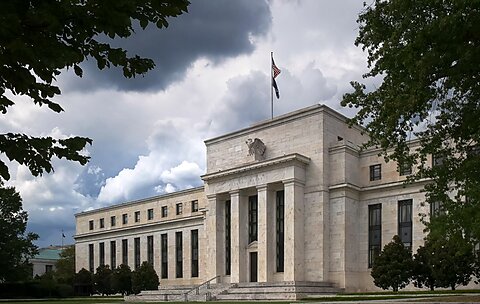The Federal Reserve is scheduled to conduct its five-year monetary policy framework review in 2025, barely two years after one of the nation’s worst bouts of inflation. The review is the perfect opportunity for the Fed to take a bold step toward objective policymaking that could protect Americans from future policy mistakes, such as those that led to the post-COVID pandemic inflation spike. To take this step, the Fed’s review should include an examination of monetary policy rules that would commit it to certain courses of action regarding its future monetary policy stance.
As long as the monetary system is based on government-issued paper (fiat) base money, some group of government officials must manage that issuance. Because there is no pure market-based mechanism to guide how much of that base money the government should issue, a monetary policy rule might provide the next best alternative. As Jason Furman, chair of President Obama’s Council of Economic Advisers, recently explained: “Placing more weight on rules at the Fed could solve several problems. It would make monetary policy more predictable and understandable, reducing market volatility and enabling better investment decisions. It could also avoid the biases that have crept into the Fed’s decision-making in recent years.”
Debates over which specific rule the Fed should adopt are useful but ultimately should not stand in the way of committing to a rule in the first place. Most monetary policy rules take the form of an interest rate feedback system where the Fed sets the target for the federal funds rate (“FFR”) in response to current values of key macroeconomic indicators. Since the economy is interlinked and most macroeconomic indicators mirror each other, the general recommendations the various rules offer should (theoretically) be similar. Indeed, this is borne out by the data.
Figure 1 below compares the actual FFR to its hypothetical counterparts under various monetary policy rules. The rules considered are popular choices from academia or policy analysis and include: the Taylor rule, a difference rule, NGDP targeting, and pure inflation targeting.[1]
As Figure 1 shows, policy recommendations across the various rules closely align. (NGDP targeting is slightly more volatile than the other rules.) The key observation is that any of these policy rules would have helped the Fed avoid its costly post-pandemic mistakes. All rules recommended raising the FFR well before the Fed did so in early 2022. Instead, discretionary monetary policy led the Fed to incorrectly label inflation as “transitory” and its sluggishness in tightening its stance likely allowed inflation to become entrenched. Once it realized its mistake, the Fed had to execute a series of rapid rate hikes and has since kept its rate target higher than all the rules recommend. Had the Fed followed such a rule, it is likely that Americans may have experienced a stable increase in rates and avoided suffering the highest bout of inflation in at least 40 years.
While ample evidence has shown that rules are better than discretion, Americans should not expect that monetary policy can ever result in perfect economic conditions. Debates over the efficacy of different rules have often hindered the fight to force a rule upon the Fed. But as our new paper shows, there is no single “optimal” monetary policy rule. In the paper, we use a state-of-the-art macroeconomic model to simulate the US economy under various monetary policy regimes (such as those from Figure 1).
We find that there is no one rule that is universally best at responding to demand and supply shocks nor is any one rule the best at stabilizing all (or even most) macroeconomic variables, such as output growth or inflation. Monetary policy cannot solve all economic problems, and most rules are associated with tradeoffs that require the policymaker to decide which macro variables matter the most for welfare before picking a rule.
We also analyze the informational burdens associated with various rules. To do so, we compare the Fed’s forecasting errors under different rule regimes. Here too there is a tradeoff that is important for policymakers—rules that provide improved stabilization regrettably also have the highest information burdens.
Given the existing centrally managed fiat money framework in the United States, it is unfortunate that there is no silver bullet monetary policy rule. Still, given that central banks are ill-suited to “manage” the economy by consistently reaching precise macroeconomic goals, rules-based monetary policy might produce the best outcomes that can be expected. Our evidence suggests that any of the reasonable monetary policy rules under consideration perform similarly well, and we argue that policy based on any of these rules would be better than pure Fed discretion.
A template for a workable monetary policy rule already exists in the 2015 FORM Act. Under this approach, Congress would require the Fed to announce a guiding rule for interest rate decisions. If the Fed feels it is necessary to deviate from its rule (say to accommodate a large fiscal expenditure), it could do so provided it explains its reasoning to Congress.
The Fed will soon begin its framework review; those of us who are concerned about poor monetary policy should not let this opportunity pass to hold the Fed accountable.
To read the full paper that includes a detailed analysis of various policy rules, please click here.
The authors thank Jerome Famularo for his research assistance in the preparation of this article and the paper.
[1] A detailed explanation of the exact construction of each rule such as exact parameter specifications is excluded for simplicity. These are available upon request.
















